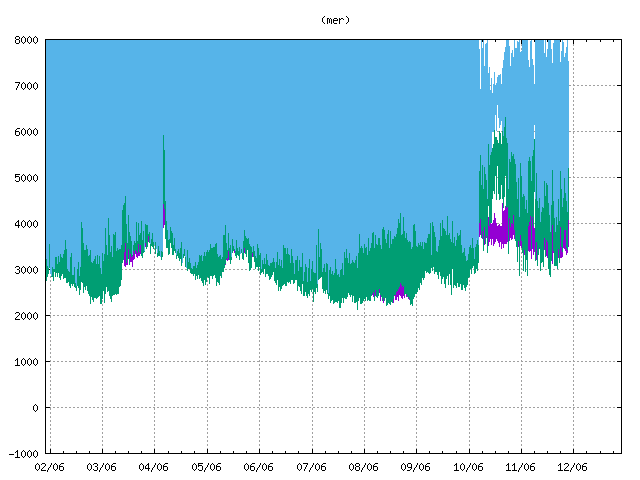This is not going to be a long update since there has not been a lot of change during the last week. There has been some and this is what happened. This is part of Krýsuvík-Trölladyngja volcano system (until the studies are updated).
- The main crater is slowly closing and lava fountain activity has almost or has ended at the writing of this article.
- The main crater is now around 100 meters high. Lava depth is from 10 to 70 meters thick depending on a location. There is a map but for copyright reasons I can’t show it here.
- Lava flow is now permanent and does not happen between overflows necessary.
- Lava lake might be forming in the crater, but the status of that remains unclear at the writing of this article.
- There are overflows happening in the crater but according to the news the main lava flow happens underground in large dykes that go from the main crater into the lava field. Creating lava ponds that regularly break and expand the lava field at random.
- Today (11-June-2021) people that are idiots where seen walking on the fresh lava that has a surface temperature from 50C to 100C in order to get to the viewing area (blocked by fresh lava flows) and one did even go as far walking on the slopes of the crater and almost ending up as part of the lava field him self. Video of that can be seen here on mbl.is website. As can be seen the lava flows them self are human height and can bury a person in a few seconds time.
- Fresh lava in Fagradalsfjall is hot. While it is only 100C on the surface it can be 900C just few centimetres down and can go as high as 1100C if a surface of a lava tube is broken.
- Yesterday (10-June-2021) a change happened in the eruption and that resulted in a change in the harmonic tremor that continues. Suggesting a permanent or a long term change to the eruption. What this mean is unclear currently.
There are no other updates as is. Next update should be on 18-June-2021 unless something happens in this eruption. Other parts of Iceland are quiet at the writing of this article.

Donations
Please remember to support my work with donations. Currently most of my work is trying to monitor the eruption in Fagradalsfjall mountain. Thanks for the support. 🙂

Jón, thank you for the update. So, the underground lava flows that were thought to be present have been confirmed. That obviously explains the odd ponds of glowing lava that happen. The changing harmonic tremor is very interesting.
Here is a video of idiot walking on slopes of an active eruption.
https://youtu.be/IEuLvKTqPwc
Yeah, that’s pretty insane. I’ve seen the videos of that yesterday. Now today, the eruption is acting more like a month ago, except the fountains. Eruption time is a little longer with shorter pause times. Seems to have come back to life. Guess even the demons get tired, and need some rest like yesterday, but Abaddon is cracking the whip again (and no 10 min smoke breaks). LOL!
On Sunday 13 June I saw on a webcam from RUV that lava is now entering Nátthaga from the west side. It appears that lava has overflowed the southern end of Gelingadalir valley, across the access trail, then down into Nátthagi valley.
Sure has. And I was watching eruption last night real late, and the outflow from the crater changed to a steady flow around 7 am local time. Lava lake is staying high, and if that keeps up for a few days, we could see a breach of the crater wall, and a new outlet form.
Basically a “volcanic” smoke show now. Crater wall that formed in front of the outlet area has been worn down, and lava seems to be flowing through a tube from the crater (hence the smokiness from the outlet area), yet overspill still happens occasionally. Lava is spreading more and more in N Meradalir valley and southward through Geldingadalir into Natthagi, but the output is hard to know, now that it’s hiding.
Observing the copious and continuous venting of gas from the end of the ‘outlet channel’ as well as the continuous venting of gas from the main lava pool at the other end of the crater leads me to the following speculation- that there is steady production of lava by the main vent, but we cannot see it because it is going into a subsurface reservoir at the outlet end. This outlet is also the outlet for volcanic gases being produced by another vent, which is providing gas and perhaps lava directly to the subsurface reservoir from underneath, somewhere near the “main vent”. So at the ‘outlet’ lava is heading down into the subsurface reservoir, but gases from a new vent under the lava lake are going out and up. Maybe that is why the tremor signature is altered.
I tend to agree that lava flow is not reduced, but instead, the greater quantity of it is underground, and surfacing towards the edge of the lava flow in Geldingadalur.
Well, I am now thinking that there is not any second vent, just a lava ‘waterfall’ at the outlet portion of the crater going down into the lake that is giving rise to the second plume.
This video is from yesterday (16-June) and shows where the lava flows into the lava tubes from the crater. Also there are cracks in the crater walls and that means the walls are unstable and are going to collapse.
https://youtu.be/hTxqj5KhVcA
Steady over flow today. And the cracks in the crater are what I was referring to in an earlier post. A higher lava lake, especially a roiling one, can take advantage of, or create cracks, thereby creating a new outlet flow. Waiting for something like that to happen. Got to keep things interesting. 🙂